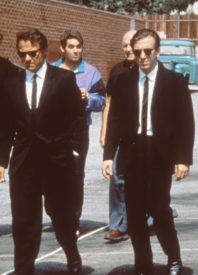
Cameron Maitland and Alicia Fletcher have recently been releasing episodes of A Year in Film through Hollywood Suite. This time they’re back with 1992 and 2007. 1992 seems like another unconventional choice until they remind us that that was the year Quentin Tarantino ushered in an era of American Independent film.
But just like most eras, it wasn’t a scorched earth kind of thing. The talking heads here like Eastern Yoo contextualize the fact that New Hollywood auteurs like Francis Ford Coppola. He was still working or at least passing the torch to future generations of actors and directors. In 1992, he released Dracula.
Dracula, according to Fletcher, a video store favourite. With that film, Coppola gives spotlights to generations of actors. Gary Oldman and Anthony Hopkins were so much at their best that Keanu Reeves and Winona Ryder, who were green in comparison to the veterans, couldn’t keep up.
And if audiences think that this year is the year of the villain, this episode reminds us that the same trends happened in 1992 when Tim Burton’s Batman sequel featured the Penguin as much as it did the masked hero.
Spike Lee’s Malcolm X is the most successful film with black male protagonist but the talking heads also reminded us of the Eddie Murphy vehicle Boomerang. There is, however, an irony here about critical discourse since most of the critics here are straight and white.
At least this show is aware of such disconnects. During the 2007 episode, Geoff Pevere points out the difference between films we consider great and the box office list. Serena Whitney diagnoses that disconnect in that most audiences are hate watching these films.
The show, then, spends more time discussing the great films over the box office ones. Two of those films are Paul Thomas Anderson’s There Will Be Blood and the Coen Brothers’ No Country For Old Men which make my list for that year’s best films.
Another film that makes both their list and mine is Zodiac which, according to Pevere, solidified David Fincher’s status as an auteur. The talking heads here parse out Fincher’s use of his cast to keep us guessing on who the killer is. This is a Pevere heavy episode.
I have no complaints about that though. He’s one of the few critics to discuss another 2007 great and this show’s obligatory Can-con, David Cronenberg’s Eastern Promises. I’m always in for these segments, although some are better than others.
Another technically Canadian film is Superbad which I guess puts into context the rise of Judd Apatow and Seth Rogen. However, its cringe worthy comedy is a bad example of that movement. I’ll have to disagree with the critics on this one, but I like how the show challenges me and its audiences.
Find out more about A Year in Film in https://hollywoodsuite.ca/ayearinfilm/.
- Release Date: 12/22/2019

